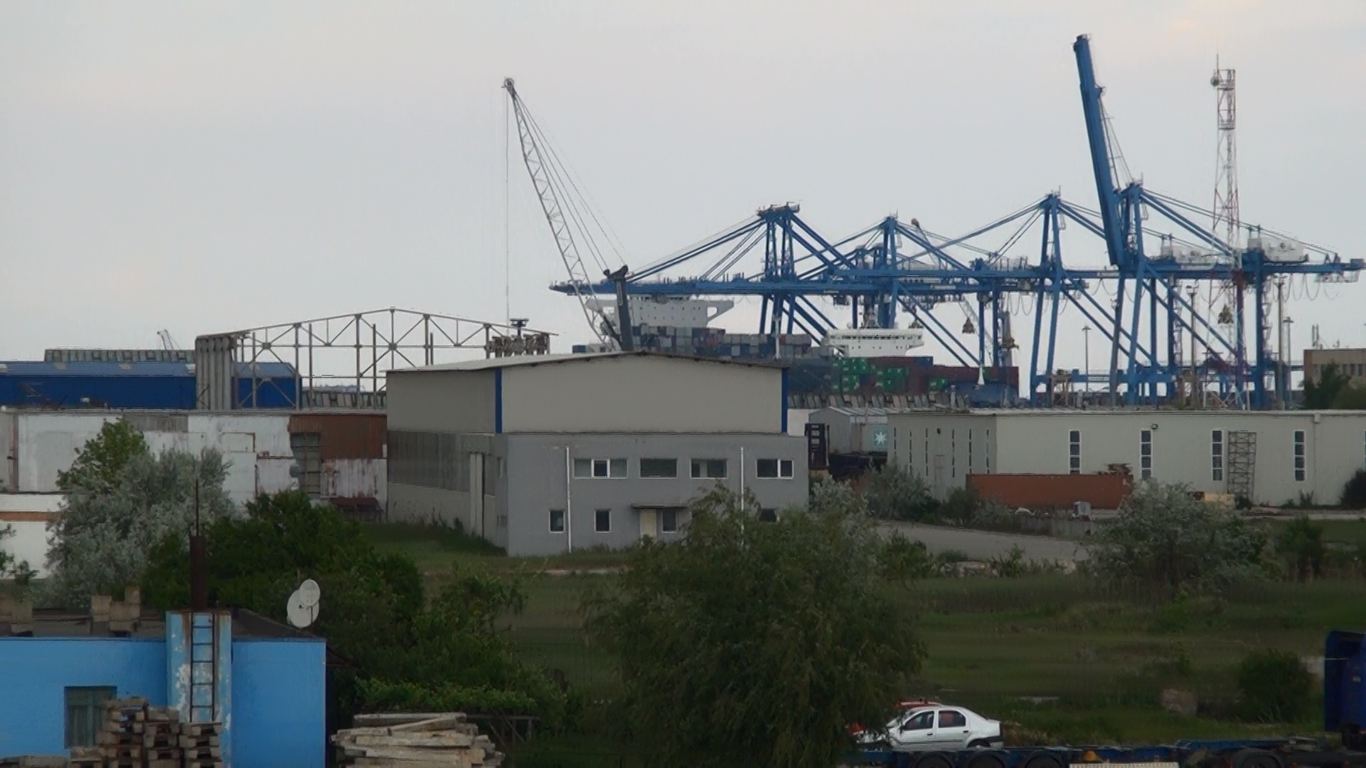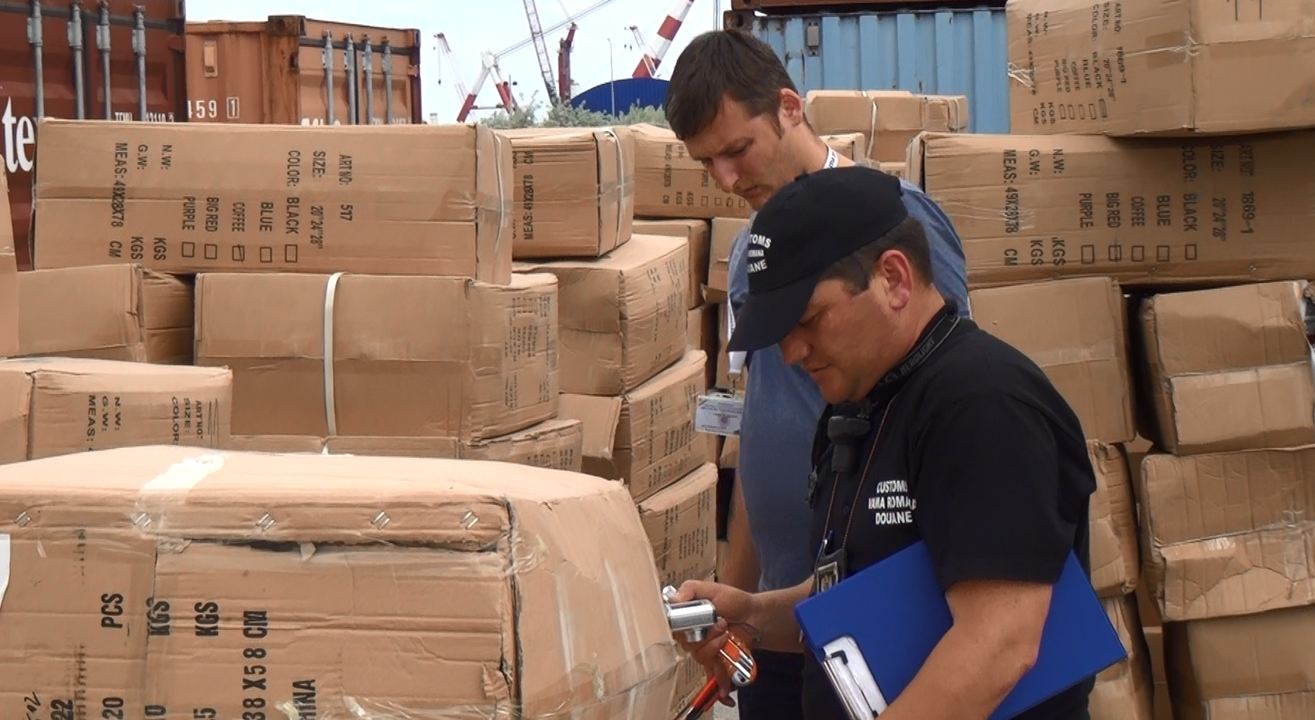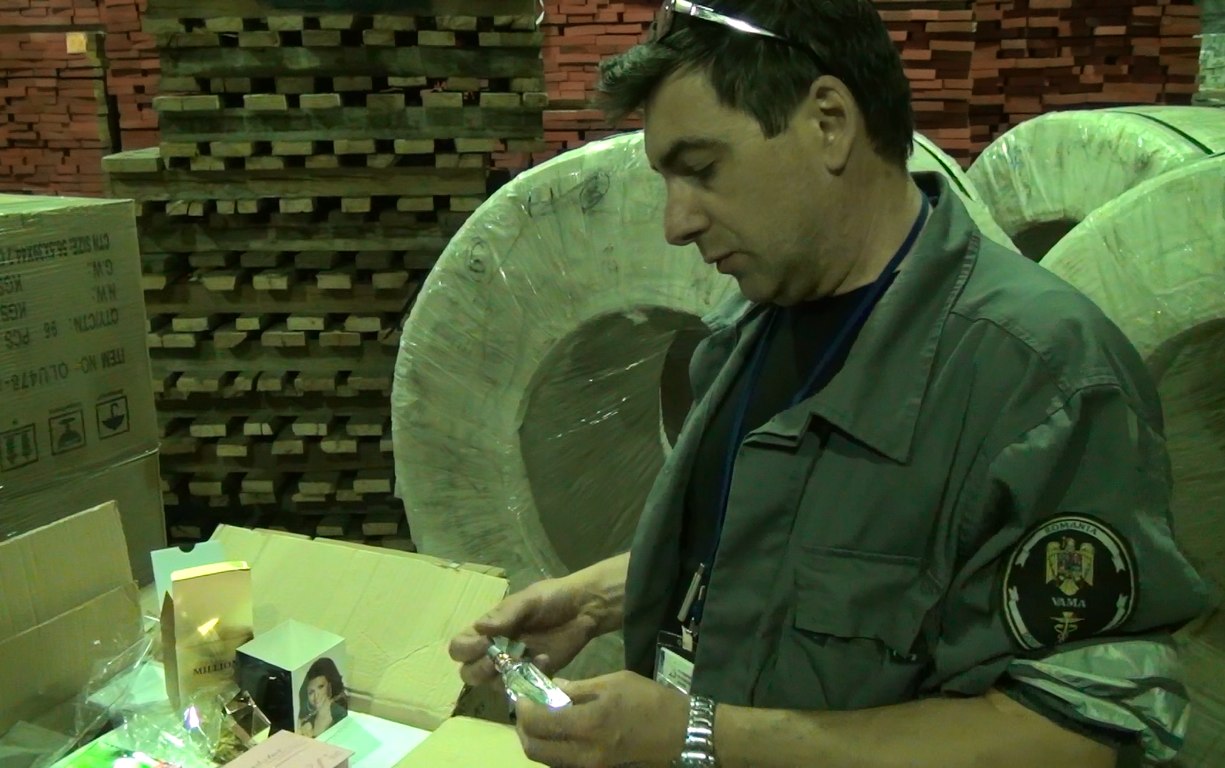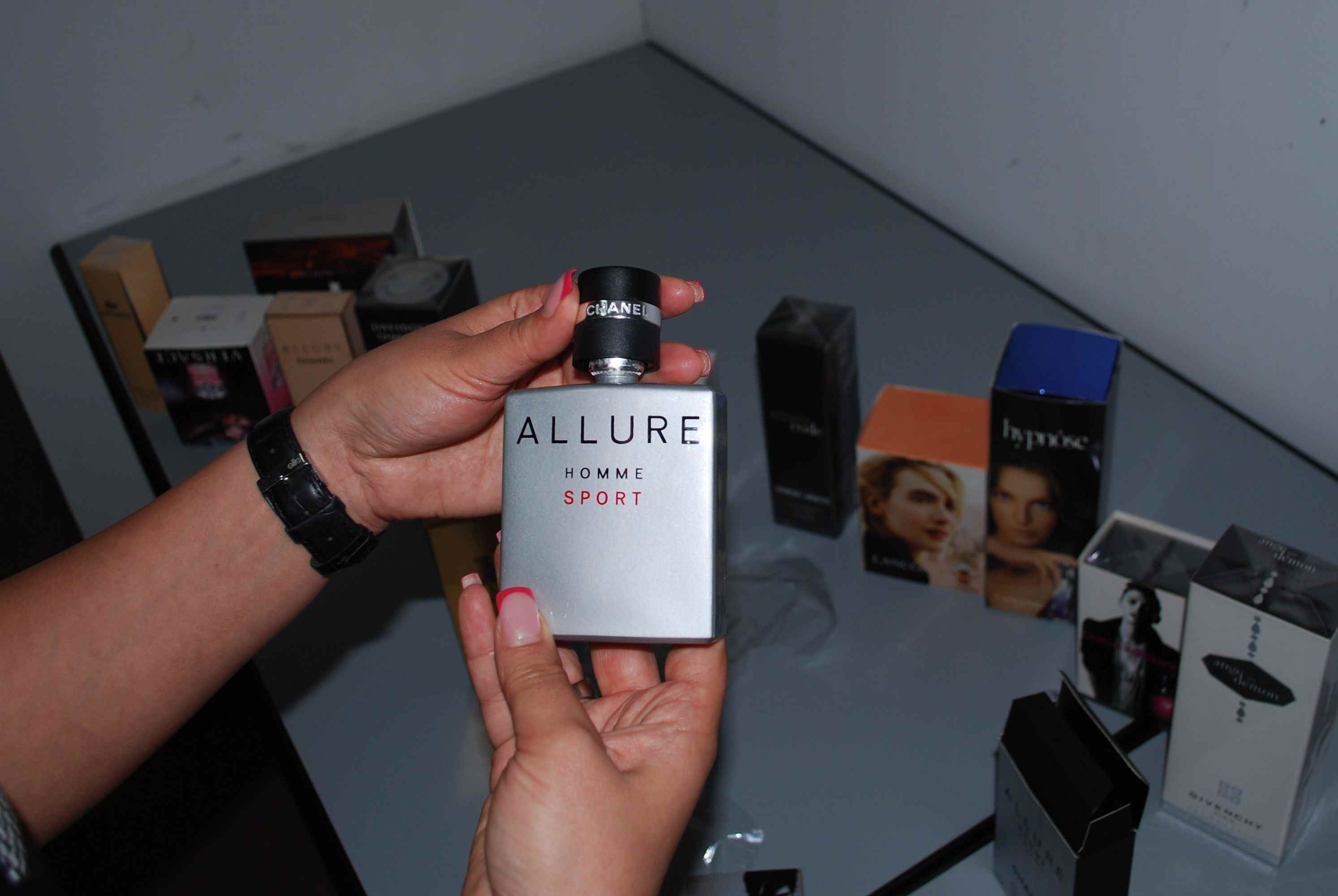Criminal gangs using a route from China through Turkey to Romania are flooding the European market with fake branded perfumes - threatening the health of consumers and providing funds for gangsters
The value of fake perfumes in a single container is between one and three million Euro
- Hundreds of thousands of fake perfumes are used by Europeans without knowing the health risks
- Organized crime networks earn dozens of millions of Euro from this business as the criminal penalties are much lower than for drug dealing or sex traffic.
- Inaction by representatives of luxury brand owners means that counterfeit brands can legally enter the EU market - even if the dodgy products are caught by custom officers.

A sunny day in July in the Saturn resort on the Black Sea coast.
I am drinking a beer on the balcony of restaurant, when a grizzled man in his thirties in a white T-shirt carrying a small bag approaches me.
“Do you wanna Chanel Five?” he asks.
Professional curiosity leads me to follow up what these hawkers are trying to push.
“Let me see what you have,” I say.
The seller looks around at a crowded boulevard, where police officers are patrolling nearby. The restaurant manager is eyeing him.
A little fearful, he searches in his white pouch.
After several seconds, he says he does not have ‘Chanel Five’ but can offer me perfumes from Christian Dior and Paco Rabanne for about 25 Euro.
“I can’t choose the brands from the place I get them from,” he says, somewhat disappointed in himself. “I just pick them up from a pile.”
This hawker is the final link in a chain that starts in China, stops-over in Dubai and ends up on the shores of the European Union.
He buys his merchandise from a middleman, who, in his turn, purchases the perfumes from a distributor, who brings the products into Romania through the Black Sea port of Constanta.
This port plays host to the passage of thousands of containers every day, yet no more than a few dozen are subject to inspection by customs and border police.
But none of these brands are real.
Counterfeit deluge
An intense siren sounds as haulage equipment moves a 20-ton container from a storage platform to the back of a lorry.
Amid the heavy vehicles and the noises of the cranes swarm Border control officers. Some are dressed as civilians and others carry guns.
The harsh sea breeze, alongside the whirr of lorry engines and the rumbling of the loading machinery, creates the atmosphere of an open-air factory.
Officers in blue uniforms which barely read ‘CUSTOMS’ photograph the containers, check the papers and cut the security strips with utility knives to verify the contents.
This is Constanta South Agigea cargo port, where vehicles transport the containers from the free zone to a customs broker company, which fills in the requested documents for the import of merchandise into Romania.
The containers are then inspected by a joint team of Customs officers and border police, assisted by an organized crime unit. The containers are scanned by a machine.
If any are suspicious, the customs and border police crack open the container and check every item inside - a process which can last up to a day.
If they find counterfeit products during the inspection, they are seized by the Customs and a criminal prosecution starts.
The security staff pay increased attention to imports from high-risk regions South East Asia, China, Thailand and the Middle East.
Nevertheless only a fraction of the containers undergo such a rigorous examination.

According to the Romanian Border Police, the peak of seized counterfeited cosmetics was 2008 when the numbers of captures totaled 433,000 perfumes - about 1,000 per cent higher compared to 2007.
The most counterfeit perfumes relate to Versace, Chanel, Prada, Gucci, Bvlgari, Boss, Thierry Muglier, Dior, Nina Ricci and Givenchy because of their high value on the open market.
The majority of fakes originate from China, Turkey, Hong Kong and the United Arab Emirates.
But the route to Europe is either overland from Turkey to Bulgaria and Romania or by sea from China to Romania - making the eastern EU country a target for fake cosmetic traffic.
28 days later
I followed up one recent case to see how this system worked.
On 31 August 2012, a joint team of Customs inspectors and Coast Guard officers discovered almost 2,000 bottles of eau de toilette in one container.
All the products carried the names of different premium scent brands. The importer was Good Price Diverscom SRL, a Romanian company established 28 days earlier, with a line in retailing household goods.
The registered company’s headquarters was in a small village outside Bucharest. The sole owner and manager is Galina Zubco. Born in 1957 in the Republic of Moldova, she has both Romanian and Moldovan citizenship.
Zubco confirmed to me that the eau de toilette had been ordered online with a company in China, but claims they were not ‘branded’ at this time.
“We showed the Chinese catalogues with the perfumes to our clients and they placed the order,” she says. “The perfumes depicted in the catalogues did not have any brand on them.”
She argues that the products were confiscated after a tip-off from an “anonymous snitch” to the Financial Guard (the Romanian equivalent of the IRS).
But, she adds, the prosecutors did not start a criminal investigation because there was no financial loss for the brand-owner.
After suspect cosmetics are seized by the authorities, the trademark owner - such as Chanel or Versace - is notified by the Customs and Border Police in order to take action.
The trademark owner or their representatives decide whether the products are counterfeit and whether to take further steps. The Romanian authorities are notified by the trademark representative of this decision.
Usually these products are destroyed by the Police at the trademark’s expense, but there are cases when the owner decides that such a crime does not significantly infringe their property rights.
In this case, the perfumes can be returned to the importer.
With Zubco’s company, she claims the brand-owner of the counterfeit products never gave her any notice that the items were fake.
If representatives of brand owners do not complain, the state authorities have no power to intervene in the passage of what could be illegal and potentially dangerous cosmetics onto the open market posing as luxury items.
Therefore counterfeit perfumes can reach customers in the streets.
“The trademark owner representatives either does not reply to our solicitations or the seized quantity is too small and, because of the financial crisis, they do not perform an analysis on the products because this costs a lot,” says chief-commissioner Gabriel Calimente, specialist officer on intellectual property rights - IPR - in the Romanian Coast Guard.
The warehouse where the seized perfumes and cosmetics are stored in Constanta Sud Agigea sea port is a hangar the height of four stories.
Inside under a padlock, the large boxes with counterfeit products lie on four huge metal stands. On the boxes one can read ‘Certier’ instead of Cartier or ‘Chonel’ instead of Chanel.

Eduard Gheorghe wears his sunglasses slyly on his forehead while he walks around the large boxes. No one could notice he is one of the 70 customs officers in Constanta Sud Agigea unless one sees the small logo on the sleeve of his left upper arm.
“There are two types of counterfeit perfumes,” he says. “Those with identical designs to the known brand and those with a name and logo where only one letter differs from the original."
When ‘real’ perfumes are due to enter the country, the brand owner informs the customs prior to its arrival, giving details of the transport container.
If a Chanel or Paco Rabanne batch turns up unannounced, the customs and border police then seize the cache.
According to the Constanta Sud Agigea Customs the counterfeit perfumes rate of seizure grows every year. The largest in a single transport was performed in December 2012 with a value of 1.4 million Euro.
Customs overwhelmed
Constanta South Container Terminal (CSCT) is known as “a state within a state” and its employees wear deadly weapons on sight. The Customs and Border Police officers are not allowed inside the area where the containers are unloaded from ships, or if they did the inspection must be previously announced.
CSCT is a company established in December 2003 with an off-shore parent firm registered in the British Virgin Islands: DP World Gold Port Limited.
The company owns the sea port terminal in Constanta Sud Agigea which has operated since April 2004.
At the end of 2003 the Romanian government organized a public bid to lease the terminal for 20 years.
The bid was won by CSCT, which has been established few days prior to the bid. The company was owned at the time by the Dubai Port Authority - one of the three largest Dubai state owned companies.
The present terminal capacity is 1.3 million TEU – standard container – with a plan of reaching 3.5 million.
This capacity overwhelms the 70 customs officers working in Constanta Sud Agigea. Due to the insufficient personnel and poor equipment, it is no wonder hundreds of containers with fake perfumes reach the European Union through this terminal.
On average the value of fake perfumes in a single container, which is the size of a lorry, is about one to three million Euro.
Unwilling to react
Official organizations paid to track counterfeit goods refused to talk about this boom in fake cosmetics which threatens their member base and deceives consumers.
The European Anti-Counterfeiting Network, known as ‘React’, is a non-profit organization based in the Netherlands. It has over 20 years of experience in the counterfeit field and 190 members in fields such as cosmetics, tobacco and pharma.
React undertakes enterprise raids and legal formalities in almost all EU countries. When asked about counterfeited perfumes, a React official from the headquarters refused to give any comment and directed me to a lawyer in Romania.
Gabriel Turcu is a lawyer who also represents the majority of perfume producers in Romania and the person contacted by authorities when property rights in perfume industry are violated. He initially agreed to talk about the fake perfumes and the black market, but changed his mind.
React officials in China and Turkey also refused such solicitations.
The perfume producing companies had conflicting reactions when asked about the black market and their fight against fake perfumes.
Chanel and Procter & Gamble Prestige, the producer of Dolce & Gabbana and Escada, among others, commented on the issues.
Versace expressed its regrets at not wanting to talk.
Prada, Hugo Boss, Gucci and Bvlgari would not give an answer.
A Chanel official said the counterfeiting in Europe represents a two billion Euro per year business which leads to the loss of 100,000 jobs and the loss of tax earnings.
The Chanel official also stressed that the French legal system has been reinforced in the last few years following a large public awareness campaign by the luxury industry. In France any person who makes, imports or distributes counterfeit products risks two to three years imprisonment and a fine between 150,000 to 300,000 Euro.
Chanel was among the first company to create an internal structure to fight against this affliction, and also against reselling on parallel markets, including selling stolen products.
Procter & Gamble Prestige said the company is committed to being “rigorously disciplined” in ensuring that the products are only available in authorized retailers.
“We have established working relationships with Romanian Border Police and Custom who are doing a very good job,” read a statement. “This is an industry issue (n.r. – counterfeiting), but we take it very seriously.”
Kids victimized
Children have become victims of low quality and fake perfumes. In 2011, three girls aged between 12 and 13 in Baia Mare, north Romania, ended up in Intensive Care after spraying themselves with a lilac-style perfume, believed to have originated from China.
The girls were diagnosed with nausea and dizziness - in one of hundreds of cases annually of damage caused by low quality cosmetics.
“Counterfeit products are very toxic,” says under-commissioner Aurel Dobre, a specialist officer on property rights within the Romanian General Police Inspectorate. “The risk for health is huge. The individual who fabricates the fake perfume wants to keep a low cost. If a genuine perfume costs 250 lei (57 Euro), a similar brand but fake costs 50 lei (11 Euro). This fake is bought from an illegal warehouse at a third of the price asked for in the streets.”
Romania’s National Authority for Consumers’ Protection (NACP) admits there is a phenomena of counterfeit cosmetics.
From 100 cosmetic producers, importers, distributors and sellers under inspection, more than 65 per cent were found to have irregularities.
Between 2007 and 2013, NCAP inspectors penalized the industry with almost 3,500 fines, totaling around 1.9 million Euro.
Every year the authority receives 260 complaints about cosmetics - almost one per day.
This field of piracy and counterfeit was flagged in red by the European Commission, prompting the Romanian General Prosecutor’s Office under the Supreme Court of Justice to create in February 2006 a working group to fight against such traffic.
Monica Pop is a prosecutor who runs the department in the General Prosecutor’s Office and says Romania is one of the EU member states with strong legislation in the field.
However she says the prosecutors’ investigation has become more complex, now that crime has moved onto the Internet.
“The e-commerce of fake perfumes has exploded,” adds police under-commissioner Aurel Dobre.
The increasing rate of selling fake perfumes on-line at wholesale and retail level has also caught the attention of Europol.
Both Europol and Interpol warn the selling of counterfeit products is an important revenue source for organized crime networks and financing for terrorism.
This is because the property right crimes are often seen as less dangerous than trafficking in drugs or weapons - a perception that gangsters are now exploiting.
Europol’s Organized Crime and Assessment Unit (OCTA) made public reports showing the most important country of origin for counterfeit perfumes, toys or textiles is China, where Chinese organized crime groups were involved.
This merchandise often pass through free zones in United Arab Emirates, says one report, where the trace of the fake products is lost and a new logo resembling the genuine article is printed.
That is why Europol says the largest seizures on the EU border of counterfeit products originate from the Emirates.
Camorra – the Neapolitan mafia and ‘Ndrangheta – the Calabrian mafia have connections with the Chinese mafia to bring such products into Europe.
The majority of fake perfumes are sold in the streets by well organized groups. Many of them quit trafficking drugs to focus on trading fake perfumes because the public does not view this crime as serious, while the profits are substantial and the punishment is relatively small.
Corruption via Turkey
One of the largest criminal network operating with fake perfume was dismantled by the Romanian Organize Crime Unit [DIICOT] in 2010 after one year of surveillance.
The network was run by three Turkish citizens living in Belgium and The Netherlands. Some of the 24 members are already convicted, others are waiting for a court decision. According to the prosecution, the network leaders used border policemen and customs from Romania and Bulgaria.
Eight containers reached the EU with fake perfumes from China and Turkey. In total the value of the eight transports was about 35 million Euro. From the eight transports, the Romanian and Hungarian authorities seized five and put the remaining three under surveillance from Romania to Belgium to trace the real beneficiary of the fake merchandise.
Some of the network’s members ended in jail for 15 years. They were charged with corruption, initiation of an organized crime group, smuggling, counterfeiting trademarks, forgery and money laundering. Others are still waiting the court decision.
The leader, Mustafa Avci, was at the time of the Romanian prosecutors’ investigations, under indictment in Germany for initiating an organized crime group which smuggled cigarettes from China to EU through Antwerp.
In March 2009, Mustafa Avci, a Dutch citizen living in Belgium, Vahdet Alibeyogullari in The Netherlands and Vedat Vurgun in Romania - all of whom are of Turkish origin - set up a business in the import of counterfeit perfumes from China and Turkey and sold them in Western Europe.
The order for the fake perfumes was placed in China to a company located in the outskirts of the Zhongshan city, near the South China Sea. The fake perfumes were loaded on the ships in a port not far away from Hong Kong with the destination of Constanta Sud Agigea. The shipping papers claimed the containers held plastic mannequins.
The business HQ was in Sibiu, a Transylvanian city and 2007’s European Capital of Culture. As part of the network was a Custom officer from Romania who received 3,500 Euro for each load he did not inspect. Another 3,000 Euro was for a border policeman on the Romanian–Hungarian frontier. Officially, the lorries brought ceramic toilet bowls into Romania. The network also used non-existing companies as destination or shipping companies whose names had been used without their knowledge.
To finance the Chinese orders, Avci’s network brought fake perfumes from Turkey by lorries.
Each week a truck left Istanbul and passed through Burgas, where the network had a Bulgarian Customs officer. The perfumes entered into Romania through the Giurgiu border check point - a Danube river town established in 14th century by the Genovese traders and controlled for centuries by Ottoman empire - before traveling to Sibiu.
Daniela Stanciu is a Border Police officer in Giurgiu working for the cross-border organized crime unit. The Border Police in Giurgiu overseas 400 km along Danube the natural Romanian – Bulgarian border.
“An illegal transport does not contain only fake perfumes,” she says. “Usually, it is full of other counterfeit products such as toys or textiles.”
However, she says that lawyers for the owners of the property rights do not help them in tracking down illegal shipments.
Although fake perfumes could cause financial losses to such brand owners, she says that effectively the border police “work” for these lawyers.

How to spot a fake perfume
• The packaging has a bar code that can be checked whether it is genuine or not just by touching it.
• The fake perfume bottle is not smooth, but has striations.
• The sprayer is in poor condition and after the first few uses, will stop working and the contents will dry out.
• The scent does not linger.
• The labels are poorly attached to the bottle.
• There is visible deposit on the bottom of the bottle.
• The perfume leaves traces on the skin.
• Original perfumes have a ten-number digit code on the packaging. This code is unique like a fingerprint of each product and cannot be seen on the fake perfumes. If this digit code is duplicated or multiplied, the product is counterfeit.